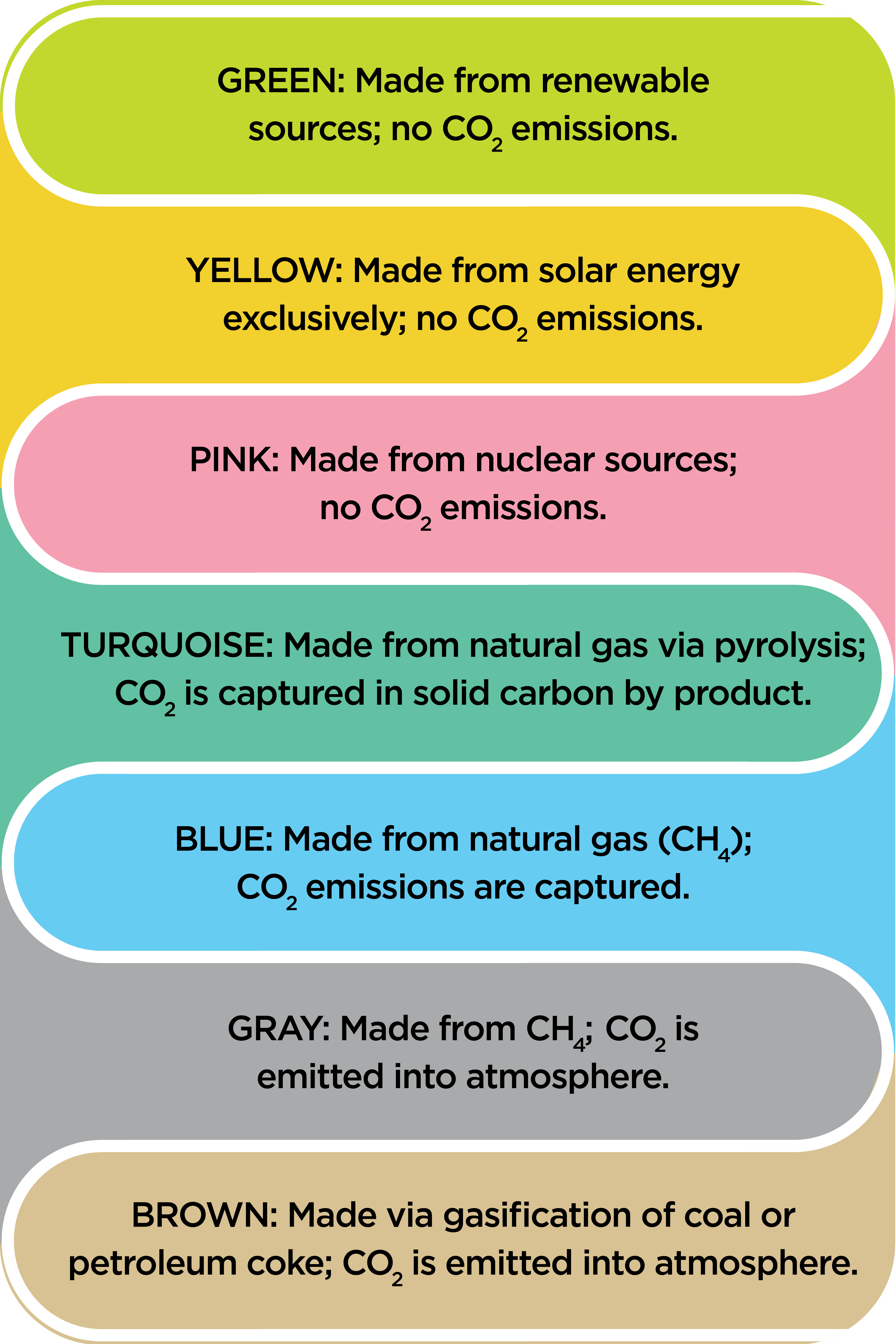The value of green hydrogen in the electric power industry, and in the energy industry as a whole, is almost entirely due to its ability to concentrate renewable power in a carbon-constrained world. The point when hydrogen becomes an economical part of the energy landscape depends on the regulatory framework in a given jurisdiction. The energy industry is an incentive-driven market and hydrogen won’t achieve cost parity with fossil fuels absent a regulatory environment that imposes additional costs on fossil energy or limits nonrenewable CO2 emissions.
Even without global consensus on carbon pricing, hydrogen projects are developing in strategic markets:
- In the U.S., regions with large renewable penetration can experience excess production that results in depressed power prices and loss of revenue from curtailed assets. The utility NextEra Energy is taking advantage of such a situation to develop a 20-megawatt (MW) electrolyzer project to use excess renewable power to produce hydrogen for blending into the natural gas fuel for a combined-cycle power plant.
- In Europe, where carbon pricing is being phased in, Fertiberia’s fertilizer plant is offsetting up to 10% of its natural gas consumption with a 100-MW solar field and electrolyzer plant.
- Saudi Arabia is teaming with U.S. chemical manufacturer Air Products on a global-scale green hydrogen and ammonia project using abundant renewable power in the Saudi desert, anticipating a rise in corporate demand for green chemical feedstocks, especially in Europe.
- The Los Angeles Department of Water and Power (LADWP), along with Magnum Development, is planning to build a combined-cycle replacement for the coal-fired Intermountain Power Plant in Utah. The replacement will be able to fire up to 30% hydrogen on startup, with plans to eventually increase to 100% hydrogen firing. Nearby salt domes will be developed for bulk energy storage.
- A similar combined-cycle project is underway in Ohio, which will burn up to 20% fossil-sourced hydrogen upon startup. It is being built in anticipation of eventual conversion to green hydrogen and also has nearby salt formations.
In the short term, the first three publicly announced projects are examples of current market opportunities for the electric industry to begin piloting hydrogen projects and developing operational experience. Areas with significant excess renewable capacity can direct that production toward electrolysis rather than simply curtailing it. Natural gas blending is being widely discussed by utilities and power producers as an ideal application for intermittently produced hydrogen. Hydrogen blends easily into natural gas and while the maximum hydrogen concentration must be evaluated for each system, many believe that hydrogen blends between 5% and 15% may be possible without extensive upgrades. The blended gas can offset some of the natural gas cost of nearby generating facilities or be blended into the larger distribution network to reduce the overall carbon intensity of natural gas operations.
Natural gas blending is ideal for intermittent hydrogen production, too, since expensive storage would not be required to smooth out unsteady production. Converting existing plants, especially combustion turbine plants, to burn blended or pure hydrogen could help extend the life of these expensive assets well into the future. Most models of combustion turbines can be converted to burn blended or pure hydrogen with modifications to fuel handling and combustor systems, with the extent and magnitude of modifications dependent upon the turbine model, age and other factors.
A number of leading reciprocating engine and combustion turbine manufacturers are developing units that can burn 100% hydrogen fuel. Demonstration 100% hydrogen projects could be operational by 2023, and commercial-scale plants may be coming as soon as 2025.
Another likely growth area is hydrogen production for vehicle fueling. Large trucks and heavy equipment are not as easily converted to battery electric power as passenger cars. Hydrogen engines or fuel cells are a more natural fit for commercial and heavy construction applications.
Dedicated hydrogen production for industrial users is expected to grow as carbon regulations are implemented. Ammonia is a natural industry to pilot renewable hydrogen production since the ammonia production process itself would not change, only the source of the hydrogen feedstock. Other industrial applications are envisioned. Hydrogen could replace fossil-derived blast gas as the reductant in blast furnaces, reducing the carbon intensity of steelmaking. Burns & McDonnell has even been approached by oil refiners looking to integrate green hydrogen as a means to get ahead of possible carbon regulations. These applications offer a growth market for load to the electric industry, since much of the primary energy to make this industrial green hydrogen is likely to come from electric sources.
The LADWP project gives a glimpse into a possible future for hydrogen as an energy storage medium. The renewable generation that will be required to meet zero-carbon legislative mandates needs a dispatchable backstop with days or weeks of capacity to maintain production during poor renewable output or periods of high grid demand. Green hydrogen, or synthetic fuels produced from it, can meet that need in a way most other energy storage options cannot, simply by virtue of scale. The salt domes being developed have the potential to store weeks’ worth of fuel. It should be noted that jurisdictions that allow a small proportion of fossil capacity (even as little as 10%) or nuclear generation will need much less bulk energy storage than areas with only renewable sources.

